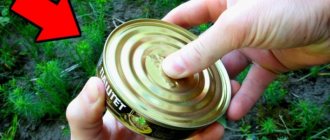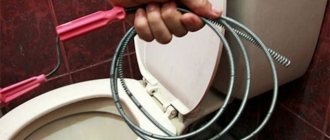Once upon a time, home canning was the only way to preserve the gifts of nature for the winter. Nowadays you can find all kinds of pickles and marinades in stores, but they are still inferior in taste to preparations made with your own hands according to old grandmother’s recipes. Knowledge of how to seal jars with screw-on lids will help any housewife diversify the family's diet without endangering the health of the family. After all, in order for stews, pickles, jams, and other masterpieces of talented chefs to be stored for a long time and bring pleasure, it is necessary not only to be very careful in preparing the products, but also to strictly adhere to the canning technology.
Advantages and disadvantages of screw caps
Screw lids are especially popular among modern housewives. They are easy to use and do not require the use of a seaming machine. Twist-offs fit tightly to the neck of the container and allow the preservation to withstand long-term storage. Screw caps can be reused.
Screw caps have one drawback - they can sometimes be very difficult to remove from the jar. But, knowing some tricks, you can easily open such canned food.
Reuse
It is not advisable to reuse screw caps. Theoretically, they can withstand 3-4 cycles, but here you have to take into account several points:
- Condition of the inner surface. There should be no scratches, rust, or old dried food residues on it. While dirt can be removed by thorough washing and boiling, the integrity of the coating cannot be restored. Any damage or the presence of foreign impurities will negatively affect the taste and safety of the preserved food.
- Geometric parameters. Screw-on lids for jars should have a perfect circle shape. Any deviation will negatively affect the tightness, and therefore the safety of the workpieces.
While rust and stains can still be seen, it is almost impossible to determine by eye the absence of small cracks. It is relatively safe to use previously used products to cover jams, jams, and other sweet preparations. They do not need to be turned over after seaming, that is, contact of the product with the lid is reduced to zero. But this will only protect against rust, and a violation of the geometry will still affect the tightness. The thick, sweet mass may not completely deteriorate from contact with air, but an unpleasant crust of mold may appear on top.
There is a fairly simple way to check the geometry of the caps before using them. To do this, pour water into the jar, close it and turn it over. If there are no leaks, you can use the product for rolling.
When rolling marinades with a high vinegar content, the varnish coating may be damaged on the inside of the screw cap. This usually happens within three to four months. That is, preservation is guaranteed to last for one season, but reusing such twist-offs is fraught with risk.
Is sterilization required?
Screw caps must be sterilized. Only in this case will they ensure long-term preservation.
Pay attention to the appearance of the lid. Do not use products with chips, rust, dents or cracks.
First, wash the twist-off with dish detergent. Then rinse them well with running water. After this, you can begin sterilization using one of three methods, which we will discuss below.
Seaming machines: types
There are several types of seaming machines for home canning; let’s look at their features and differences in detail. Seaming wrenches are produced for rolling up tin cans and capping glass jars and bottles with tin lids.
At home, winter preparations are usually made in standard glass jars of various capacities with a standard neck diameter of 82 mm.
The most popular types of can sealing machines:
- Manual seaming machine.
- Automatic seaming key.
- Semi-automatic can opener.
How to seal jars with screw caps
It’s as easy as shelling pears to roll up jars with screw-on lids. I bought jars with threads and screw caps with screws, boiled the lids, screwed the jars with my hands exactly along the threads - and did without using a wrench. Quick, practical and homemade compotes, vegetable preparations, birch sap rolls do not spoil inside the jar.
Seaming lids are often used by experienced home canning enthusiasts. They are used to using a can opener the old fashioned way.
Manual key
The most famous seaming machine is a manual one, originally from the USSR. The device is the simplest and most durable, which our grandmothers and mothers used; with the help of such a compact, simple design, they rolled lard into jars, homemade jellied meat, and prepared all the products for the winter at home. The screw wrench is reliable, inexpensive, and is popular these days. The quality of a simple manual mechanism has been tested by time, but requires experience from the owner.
For beginners, rolling up cans with a manual can opener is difficult and time-consuming. To close it correctly, you will need to frequently tighten the handle on the key until it stops, then make a couple of turns around the can, repeating the sealing several times, achieving a tight seal. Using such a device, there is a risk of loosely tightening the lid or twisting and breaking the jar itself.
Automatic machine
For beginners preparing home canning, the best seaming machine is an automatic one with two handles. There are two types of automatic machines:
- The handles on the automatic machine are located from the fastening screw in opposite directions. It is ideal for home canning, convenient, seals the jars airtight and quickly. Simply place the machine on the lid placed on the jar, press and lower both handles down at the same time. The machine closes the lid on the jar itself, and the housewife spends a minimum of effort and time during the sealing process. Jars do not swell, jams, vegetable salads and homemade pickles are stored for a long time.
- Two handles are located on one side - one above the other. The machine is easy to operate, the machine closes the jar quickly, and the seal is high. Excellent sealing of jar lids. The operating principle is standard. Cover the jar with a sterilized lid with a rubber seal inside. Place the key on top of the lid and press it tightly. We hold the lower handle with one hand, and lower the upper handle all the way down with the other. We return it to its original position and remove the machine from the rolled up can. The lids do not swell, canned watermelons and homemade zucchini caviar last a long time until the next and subsequent harvests.
The key is light and durable, seals tightly, and makes an even seam.
Semi-automatic
A semi-automatic machine called a snail rolls cans no less easily and quickly. The model resembles a manual seaming machine in appearance, but the snail, in addition to the standard mechanism – the pressure roller – is additionally equipped with a snail spiral. It's easy to roll up jars like a snail. To do this, press the snail tightly against the lid. To roll up the jar, you need to scroll the handle in a spiral until the end 4-5 times.
In addition to the snail, there are semi-automatic machines with one pressure roller and two. The devices are easy to use, the pressure roller(s) do not require adjustment, it is initially correctly fixed at the factory.
To roll the jar, put on a pre-sterilized lid with an elastic band, place the machine on top of the lid, and rotate the handle clockwise 7 times. Having reached the stop - the movement of the roller is limited - turn the key 7 times counterclockwise. The can is rolled up, resulting in a smooth, continuous seam.
When working with a semi-automatic machine, the possibility of squeezing the lid and splitting the neck of the can is eliminated.
Warming up in the oven
This method is convenient because you can sterilize both twist-offs and jars together.
Heat the oven to +50°. Place screw caps and glass jars in it. After 10 minutes, increase the temperature to +100° and sterilize the products for another 15 minutes.
Be sure to increase the temperature gradually. Otherwise, glass jars may burst. Also remember that containers and lids for preservation cannot be sterilized in a microwave oven.
Rare shot: Viktoria Isakova showed her grown-up daughter from Yuri Moroz (new photo)
“We are still friends”: Derevianko commented on the breakup with his wife
A Brazilian travels 36 km by bike every day to take his loved one home.
Rules for sealing cans for the winter
Sealing jars for the winter with screw caps means closing the jar without a machine. But what is the correct way and what is the best way to roll up cans for the winter with a machine or a snail, the faster to roll up a can with a semi-automatic key or to close canned food with an automatic machine? In fact, there is not much difference, it’s a matter of habit. It is very important to roll up the jars correctly so that the pickles remain crisp, the lids hold well, and do not swell on the rolled up jars of lecho for the winter.
Properly prepared canning will help preserve the taste of summer for the long winter months.
- First of all, thoroughly wash the jars and lids with soapy water.
- We sterilize jars and lids in any convenient way.
- We sort the products needed for the recipe. We select hard, pickling varieties of cucumbers for preparation, leaving salad varieties for preparing okroshka. Large cucumbers can be salted to make cucumber salad for the winter. Wash the vegetables well and soak if necessary.
- We clean raspberries for jam from leaves and bugs, and discard rotten ones. Strawberries are washed and dried before processing into jam and berry jam. We remove the tails from berries and fruits before putting them in jars.
- Fill the jars tightly, following the recipe.
- Jars filled with cucumbers, green tomatoes, and red tomatoes are filled with brine. Berries and fruits are poured with syrup.
- Using a recipe without sterilization speeds up the process of sealing jars for the winter. You need to close the canned food with a lid immediately after filling the cans.
- Screw on the lid.
How to check for leaks
If you buy a high-quality key and close the lid correctly, it will stay on the jar for a long time and will not swell. To prevent jars from exploding, you need to check that the lid on the jar is tightly closed. Checking for leaks is very easy.
Once screwed, turn the jar upside down and let it sit for 10 minutes. If syrup or brine leaks from under the lid, the seal is broken, the lid is not rolled up properly. Such preservation is not suitable for long-term storage. You'll have to re-roll the jars for the winter.
How to roll
Before rolling canned food, make sure that the grooves on the rim of the twist-off lid line up with the twist line on the glass jar.
Sterilize the jars. Fill them with food for canning. Use tongs to grab the sterilized lids and place them on the containers. Cover the twist-off with a clean towel and twist with your hands.
Don't try too hard. Otherwise, you will twist the thread and the seal of the canned food will be broken.
About the Kredmash key
Numerous reviews posted on the Internet highlight several advantages of the Kredmash canning accessory.
Among them the most frequently mentioned are:
- speed and quality of the conservation process;
- ease of use of the key;
- the accessory is very comfortable to hold in a woman’s hand;
- The device weighs a little, which makes the screwing process easier;
- there are no unnecessary unnecessary details that confuse new housewives;
- the product is made of carbon steel with a protective coating;
- the handles are covered with durable plastic, black in color - this material protects the skin of the hands from the appearance of calluses;
- the plastic covering the handles does not rotate or wobble;
- 8 turns are enough for a hermetically sealed seam;
- the key is very easily removed from the neck;
- The seams are smooth, no waves or other errors are formed;
- Time-tested machines are distinguished by the absence of rust and other factors that destroy metal.
How to open a jar
To open canned food, the screw cap must be turned counterclockwise. If your hands slip, cover the twist-off with a towel or plastic bag. You can also wear housekeeping gloves to reduce slipping.
If the twist-off does not work, then light a match and warm up the area under the rim. The metal will expand and you can easily remove the lid.
Sometimes the top of the jar gets stuck. In this case, you can use the following methods:
- Gently tap the top and sides of the container.
- Immerse the canned food in warm water for 15 minutes.
- Place the jar on its side and roll it on the table.
- Pry off the side of the lid with a knife.
If the screw cap is screwed on very tightly, then place the jar under running hot water for a couple of minutes. But the temperature of the canned food should be at room temperature. A cold container will burst due to exposure to heat.
Which autoclave is better to choose?
03/01/2016 | Section: Autoclave for home canning
So, you have decided to buy a canning autoclave to prepare meat, chicken stew and other canned goods, and to sterilize juices and compotes. Now it remains to decide which autoclave you need. Read our article, we will tell you which autoclave is better to choose.
Nowadays, autoclaves for canning are presented in a fairly wide range. For simplicity, we will classify them according to their main characteristics. Consider their features, advantages and disadvantages. Then all that remains is to make a choice in favor of one model or another, based on your needs and capabilities. Go. Read more
By type of clamping element
Hard
. The pressing element is a specially shaped washer. He slides along the edge of the can. The advantage is reliability and better crimping quality due to smoothing out the folds of the edge of the lid. The disadvantages are a fairly large force that needs to be applied to the handle when rolling, and an unpleasant grinding noise when doing this work.
Bearing
. The pressing element is a bearing. It rolls over the edge of the can. The advantage is that it is easy to turn, there are no unpleasant sounds. Disadvantages - less reliability and quality of crimping. Often a new machine has a faulty bearing that is difficult to spin or even jammed. When purchasing, be sure to twist the bearing with your fingers and check that it rotates easily and silently.
Is it necessary to turn such a preservation over?
To ensure the quality of the seaming, you can perform a simple test:
- screw the filled jar;
- The jar is turned upside down.
If after such manipulations no drops of liquid appear on the rim, the preservation is sealed well and its contents will be stored for a long time. By turning over jars with screw lids, you can once again verify the tightness of home preservation.











